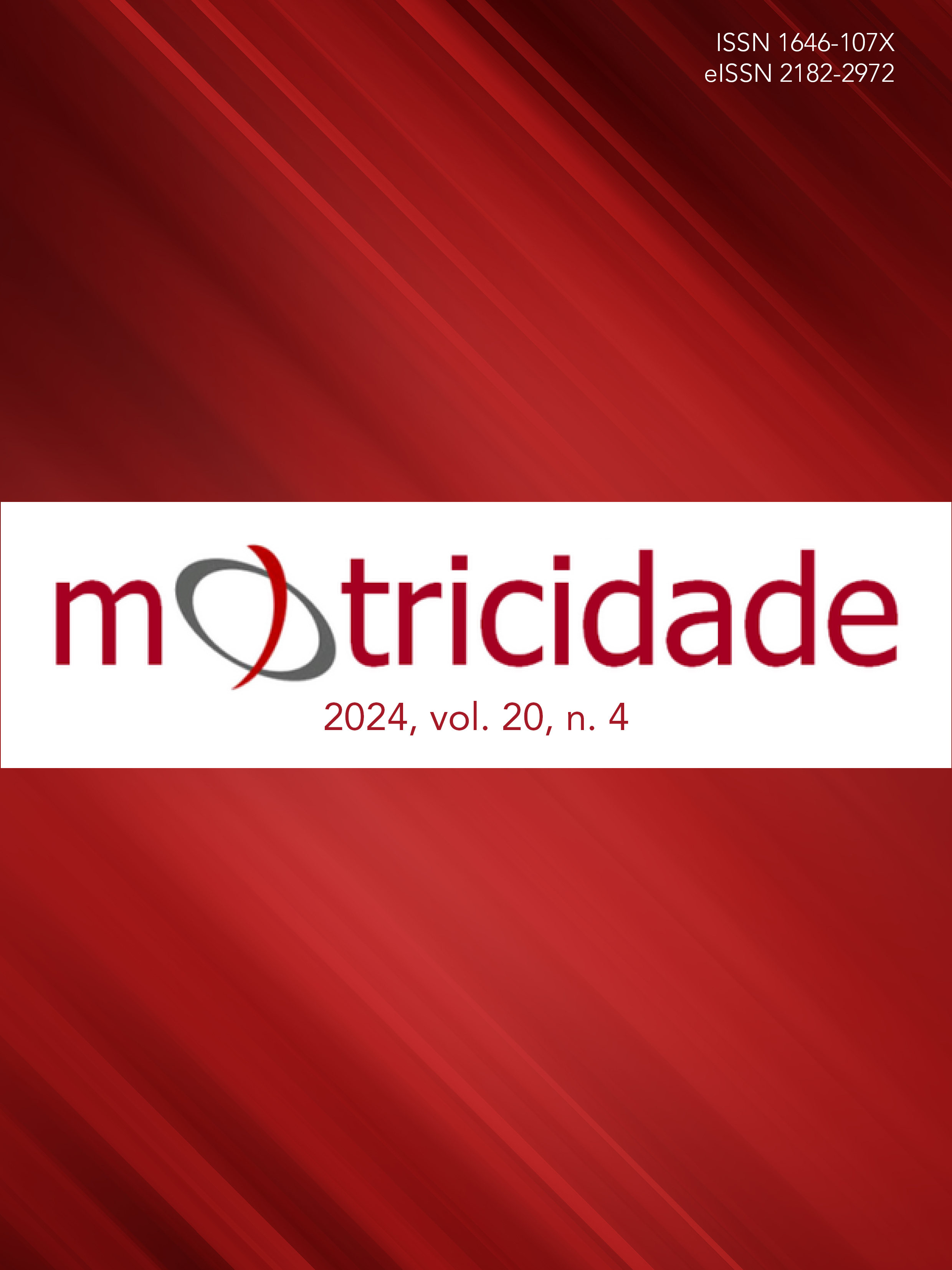The visuomotor process of children with Developmental Coordination Disorder and its relationship with functionality in activities of daily living
DOI:
https://doi.org/10.6063/motricidade.33495Keywords:
Developmental Coordination Disorder, Activities of Daily Living, Visuomotor Process, FunctionalityAbstract
The aim of the study was to analyze the relationship between visuomotor processing and functionality in Activities of Daily Living (ADLs) of children with Developmental Coordination Disorder (DCD). The sample consisted of 52 children, 35 children with DCD (mean age=7.11 years) and 17 without DCD (mean age=7.11 years). The identification of DCD was carried out using the Movement Assessment Battery for Children Second Edition (MABC-2) and the Developmental Coordination Disorder Questionnaire – Brazil (DCDQ BR). To evaluate ADL functionality, the Developmental Coordination Disorder Daily - Questionnaire (DCDDaily-Q) was used, and the Trail Making Test (TMT-L) was used to assess visuomotor processing. There were no significant differences in visuomotor processing between the group with and without DCD. When analyzing the scores of the instruments, it was possible to identify that children with poorer visuomotor processing had a lower score on the DCDQ (r= −0.253; p= 0.010) and in the Balance domain of the MABC-2 (r= −0.336; p= 0.015), and a higher score in the “school” domain of the acquisition subscale (r= 0.210; p= 0.048) and the “Leisure” domain of the participation subscale (r= −0.278; p= 0.046) of the DCDDaily-Q. Children with poorer visuomotor processing performance seem to have a higher chance of indicating DCD, poorer balance, decreased participation in leisure activities, and delays in the acquisition of school tasks. This data allows for more accurate evaluations and diagnoses to guide interventions in both the educational and health domains.
Downloads
Published
Issue
Section
License
The authors of submitted manuscripts must transfer the full copyright to Journal Motricidade / Sílabas Didáticas Editions. Granting copyright permission allows the publication and dissemination of the article in printed or electronic formats, and copyrights start at the moment the manuscript is accepted for publication. It also allows Journal Motricidade to use and commercialise the article in terms of licensing, lending or selling its content to indexation/abstracts databases and other entities.
According to the terms of the Creative Commons licence, authors may reproduce a reasonable number of copies for personal or professional purposes, but without any economic gain. SHERPA/RoMEO allows authors to post a final digital copy (post-printing version) of the article on their websites or on their institutions' scientific repository.


